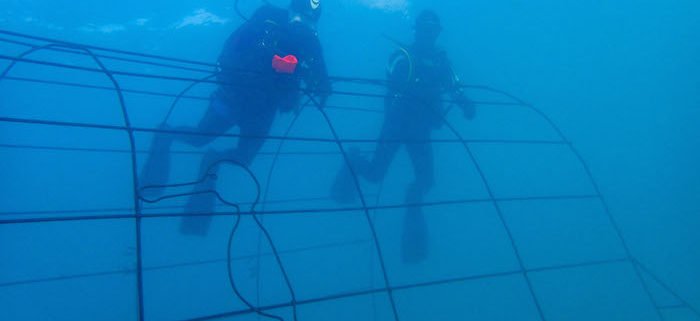New Swim-Through Tourist Attraction at Rose Garden MPA
Two weeks ago, our Science Team added a new feature to the Rose Garden Marine Protected Area (MPA): a swim-through tunnel! Although, currently only a bare metal framework, we hope that it will soon become colonised by interesting and colourful invertebrates and algae, which will in turn attract reef fish. The idea of this tunnel originally came from our Director, Emma Gibbons, who envisioned it as a tourist attraction, offering divers a unique swim-through coral reef experience, which we hope will increase visitor numbers to the MPA. The ultimate goal is to increase MPA profits for the local fishermen’s association, FI.MI.HA.RA, vital for the sustainable management of this reef area, and boost ecotourism revenue for local tour guide piroguiers who have committed to a more sustainable marine-based livelihood. We also intend to utilize it as a coral nursery as part of our reef restoration programme. Below Science Officer Martin Wong describes its construction and installation…

The 5 m x 3 m rebar swim-through tunnel was proudly constructed by the local community in Ifaty and contains a few marine life cut-out decorations embedded on its surface. The structure is very heavy, requiring six people to carry it on land. As you can imagine, its size and weight made it quite a difficult task for us to transport it from the beach out to Rose Garden in our relatively small boats. However, Anne Furr, owner of Mangily Scuba, kindly lent us one of her boats large enough to carry the entire structure.
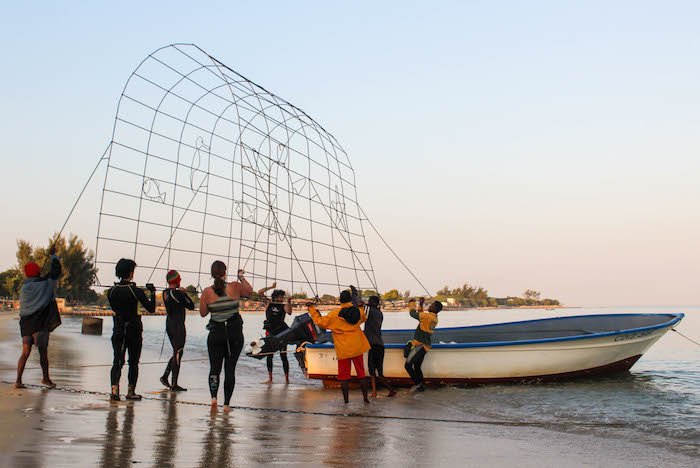
The boat trip out to Rose Garden was a slow and steady ride, giving enough time for the Science Team and our Dive Officer Louis (who kindly helped us in this project) to pose for a photo, taken by ex-Reef Doctor Science Officer Lucy Fisher. Lucy is founder of Reef Guru, a coral reef eco training and consulting company and our new collaborative partner in reef restoration. It is great to welcome Lucy back in Ifaty and we are very grateful for her recent assistance in our reef restoration programme.
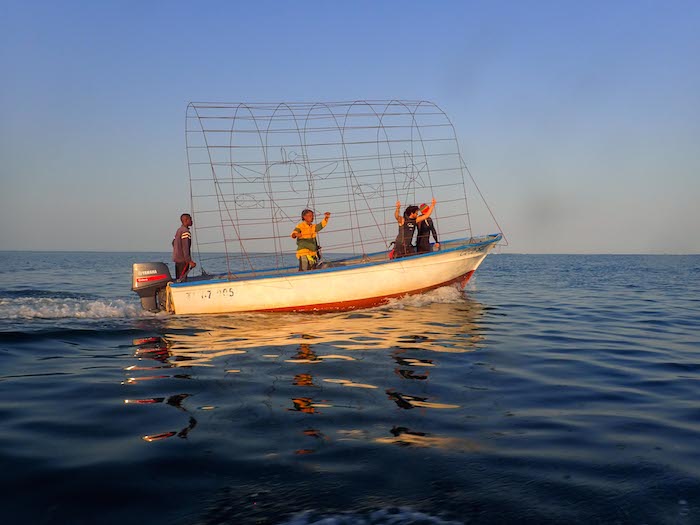
Thirty minutes later, we finally arrived at Rose Garden. We carefully tipped the structure over the edge of the boat so that it would roll over and eventually hit the sandy bottom of ~5 meters depth, which was exactly how it went down (high-five with the team!). Now the easiest part behind us, it was time to move the structure underwater. To do so, we attached two flotation devices (lift bags), one at each end to give the structure an extra lift. Then, we removed our fins, placed our hands on the bars, and started moving one step at a time. Even with the help of the lift bags and the power of eight arms, the structure still felt quite heavy and we felt just like we were walking on the moon with slow and small steps despite all the efforts we put in!
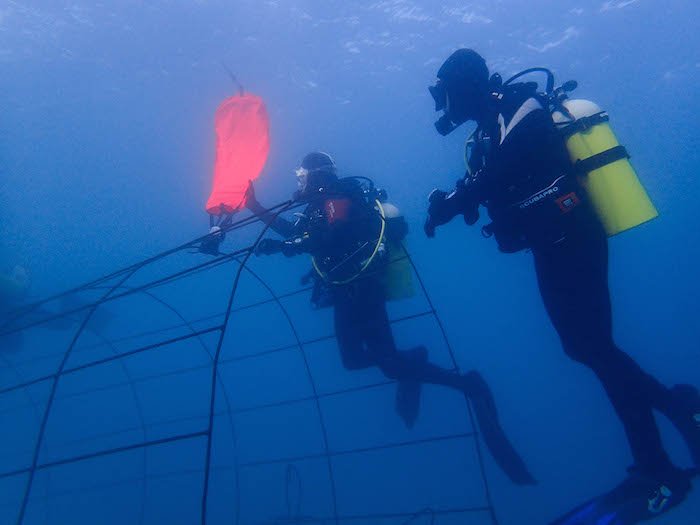
As the tunnel was dropped quite far from the target site, to avoid impacting the marine life on the patch reefs, we had to navigate our way underwater. This was not the easiest task when we are arms were overloaded, so we did end up exercising in the water much longer than we should have due to a few detours here and there! However, after 15 minutes or so, we finally reached our destination. We then settled the structure on a sandy patch and secured the base by hammering down rebar hooks. Now everything was in place, we performed the first swim through, which was a great experience that we are sure divers are going to love!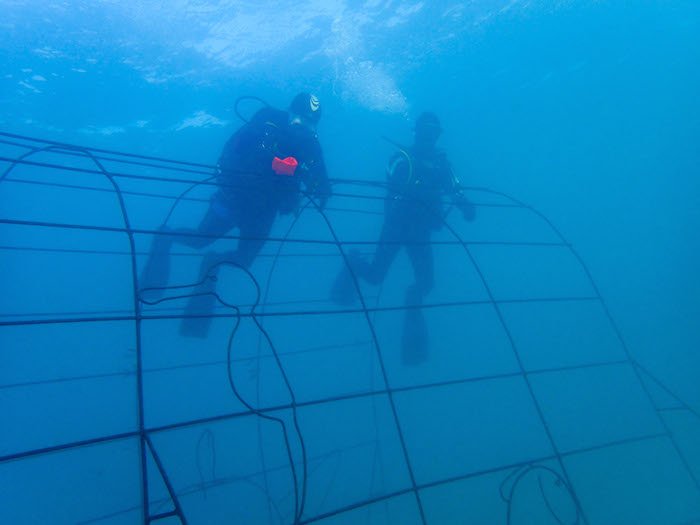
In the near future, we will be transplanting live coral fragments onto the tunnel. By doing so, not only will the tunnel be decorated, but it can also serve as a nursery ground for coral cultivation as part of our active reef restoration programme. We will also cooperate with local dive shops to advertise this tunnel so that more divers and snorkelers will be able to enjoy this swim-through experience. In doing so, we hope that these visitors will become more aware of our efforts in local coral reef restoration and conservation. Stay tuned for further updates on this project and our latest reef restoration progress!
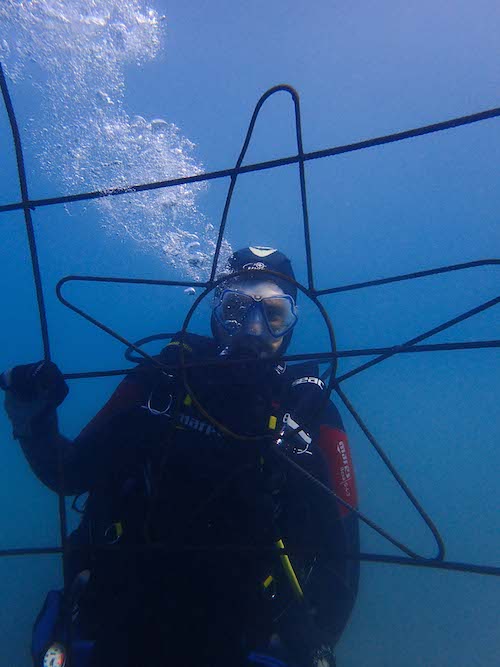
Photo credit: Lucy Fisher, Beth Dickens & Karin Moehler

